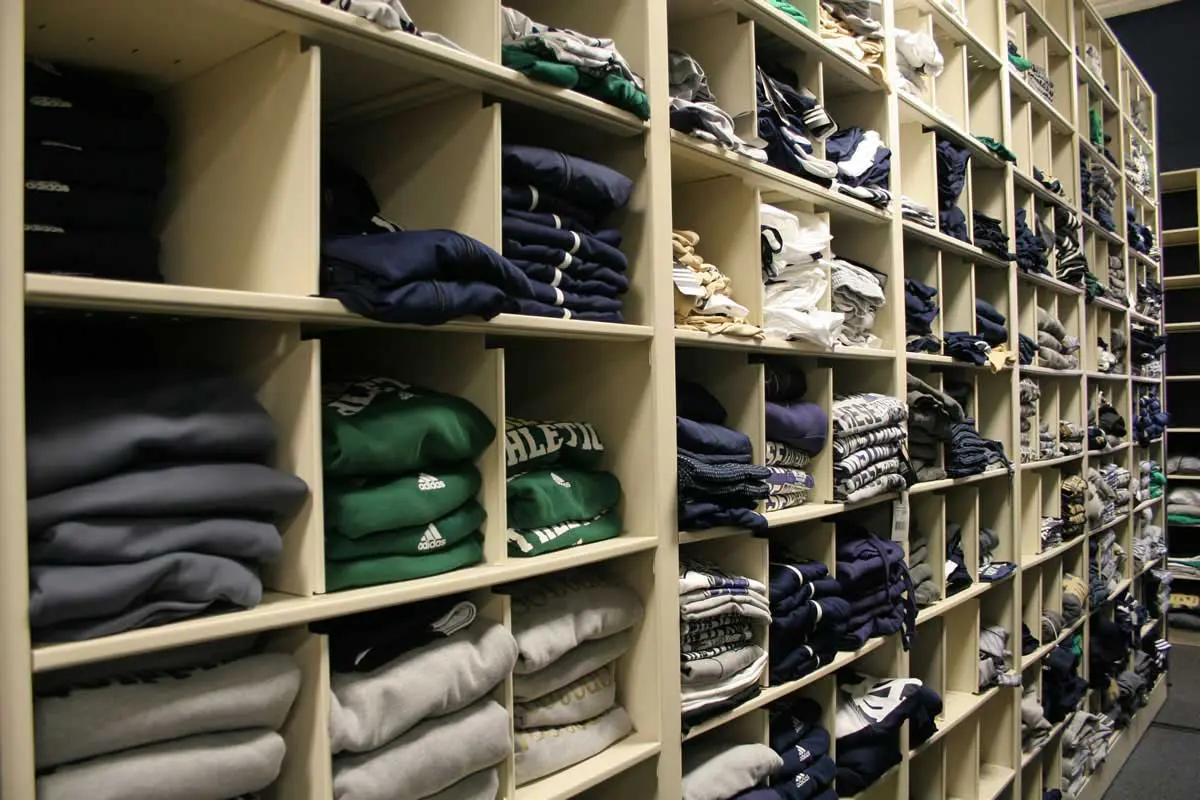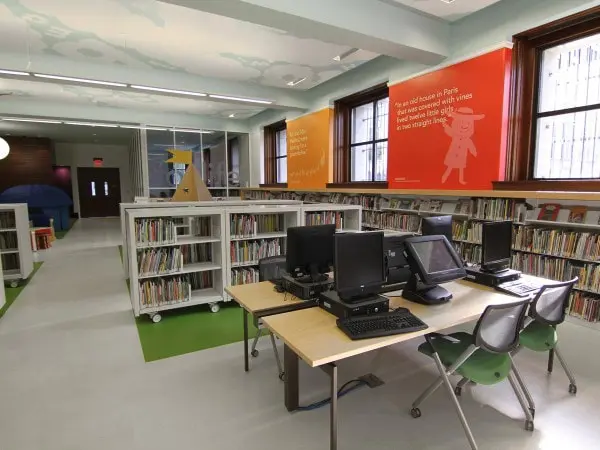
Introduction
Efficient healthcare space utilization is crucial for maximizing workflow efficiency, improving patient care, and achieving cost savings. Healthcare facilities face unique challenges when it comes to space optimization, as real estate is often limited and must be used strategically. By understanding the importance of space optimization and exploring different strategies and solutions, healthcare facilities can optimize their space, improve their workflow, and enhance the overall patient experience.
Understanding the Importance of Space Optimization in Healthcare
Space optimization is the process of making the best use of available space within a healthcare facility. It involves carefully planning and organizing the layout and design of the workspace to maximize efficiency and productivity. By optimizing space, healthcare facilities can improve workflow, streamline processes, and enhance overall operational efficiency. Additionally, space optimization provides better insight and visibility into how space is being utilized, enabling informed decisions to be made regarding space planning, resource allocation, and facility management.
The Difference Between Space Optimization and Space Utilization
While space optimization and space utilization are related concepts, they are not interchangeable. Space optimization focuses on making the best use of available space, considering factors such as workflow, efficiency, and functionality. It involves analyzing the workspace and implementing strategies to maximize its potential. Space utilization, on the other hand, refers to the actual usage of space within a healthcare facility. It is a measure of how effectively space is being utilized, taking into account occupancy, usage patterns, and resource allocation. Space utilization provides insight into how space is being used and can help identify areas for improvement. Together, space optimization and space utilization contribute to creating an efficient and productive workspace in healthcare facilities.
Efficient space utilization is crucial for healthcare facilities to achieve optimal workflow efficiency and provide excellent patient care. When space is effectively utilized, healthcare professionals can navigate the facility and access necessary resources more easily, leading to improved workflow and enhanced productivity. Efficient space utilization also allows healthcare facilities to optimize their operations and allocate their resources effectively, leading to cost savings and better patient outcomes. Additionally, a well-organized and clutter-free workspace can contribute to a positive and calming environment, enhancing patient comfort and satisfaction. Overall, efficient space use in healthcare facilities is essential for creating a smooth and efficient workflow, optimizing resource allocation, and providing high-quality patient care.
Benefits of Efficient Space Utilization in Healthcare
By optimizing space, healthcare facilities can reduce their real estate and lease costs, saving valuable financial resources. Additionally, efficient space utilization leads to an improved workflow, as healthcare professionals can access equipment and supplies more efficiently, reducing time wasted searching for resources. A well-utilized workspace can also promote collaboration and communication among the healthcare team, enhancing teamwork and efficiency. Overall, efficient space utilization in healthcare facilities can result in significant cost savings and improved workflow, ultimately benefiting both the facility and its patients.
Efficient space utilization in healthcare facilities can help generate significant cost savings and improve budget management. By optimizing space, healthcare facilities can reduce their real estate and lease costs, freeing up financial resources for other essential investments. Effective space planning and management can also help healthcare facilities avoid unnecessary expenses, such as the need for additional storage space or excessive inventory. Furthermore, efficient space utilization can improve workflow and efficiency, reducing operational costs and increasing overall productivity. With better visibility and insight into space utilization, healthcare facilities can make informed decisions regarding budget allocation, resource management, and facility optimization, leading to long-term cost savings and improved financial stability.
When space is optimized, healthcare professionals can access tools, equipment, and supplies more easily, allowing them to provide timely and efficient care to patients. Additionally, a well-organized and clutter-free workspace creates a calming and welcoming environment, enhancing patient comfort and satisfaction. With proper space utilization, healthcare facilities can also improve patient flow and reduce wait times, leading to a more positive and efficient healthcare experience. Overall, efficient space utilization contributes to enhanced patient care, better outcomes, and a higher level of patient satisfaction, ensuring that healthcare facilities can deliver the best possible care to their patients.
Proper equipment placement is essential for healthcare facilities to optimize their space utilization and improve workflow efficiency. Strategic placement of equipment ensures that it is easily accessible and positioned for optimal workflow. By considering workflow patterns, usage frequency, and ergonomic principles, healthcare facilities can arrange equipment in a way that minimizes unnecessary movement and maximizes efficiency. Additionally, space planning plays a crucial role in determining the best locations for equipment, ensuring that it does not hinder patient flow or create obstacles for healthcare professionals. By focusing on proper equipment placement, healthcare facilities can optimize space utilization, improve workflow, and enhance the overall functionality of their workspace.
RFID (Radio-Frequency Identification) tracking plays a significant role in improving equipment management and space utilization in healthcare facilities. By integrating RFID technology with storage solutions and equipment, healthcare facilities can enhance visibility, automate tracking, and improve overall efficiency. RFID tracking allows healthcare professionals to quickly locate and access equipment, reducing search times and unnecessary duplication. With real-time visibility, healthcare facilities can better manage their inventory, optimize space utilization, and make informed decisions regarding resource allocation and equipment maintenance. The integration of RFID tracking in healthcare facilities promotes workflow efficiency, reduces operational costs, and enhances the overall management and utilization of space and equipment.
Compact Storage Solutions for Healthcare Facilities
These solutions offer efficient and effective storage options that maximize space and improve the organization and accessibility of equipment, supplies, and files. Modular casework, gear storage lockers, and other compact storage solutions can be tailored to the specific needs of healthcare facilities, providing versatile and space-saving storage options. By investing in compact storage solutions, healthcare facilities can create a clutter-free and well-organized workspace, enhance workflow efficiency, and optimize space utilization, leading to improved productivity and better patient care.
Advantages of Modular Casework
Modular casework offers several advantages when it comes to space utilization and storage solutions in healthcare facilities. Modular casework provides healthcare facilities with the right tools to optimize space utilization and workflow efficiency. Its flexibility allows for easy reconfiguration and modification, ensuring that storage solutions can adapt to the changing needs of healthcare facilities. Additionally, modular casework offers a variety of storage options, including shelves, cabinets, drawers, and work surfaces, which can be customized to meet the unique requirements of healthcare facilities. By utilizing modular casework, healthcare facilities can optimize their space, improve organization and accessibility, and enhance workflow efficiency, leading to better patient care and an overall more efficient workspace.
Gear storage lockers play a crucial role in healthcare facility management and space utilization. These compact storage solutions provide dedicated and secure space for storing and organizing equipment, supplies, and personal belongings. Gear storage lockers optimize space utilization by offering vertical storage options, maximizing available space and reducing clutter. Healthcare professionals can easily access their gear, tools, and supplies, as the lockers provide designated storage areas and improve visibility and accessibility. With gear storage lockers, healthcare facilities can streamline workflow, improve organization, and enhance overall efficiency. These storage solutions contribute to better space utilization, easy access, and enhanced workflow management in healthcare facilities.
Workflow Improvement Techniques in Healthcare
Implementing workflow improvement techniques is essential for enhancing efficiency and optimizing space utilization in healthcare facilities. Healthcare facilities can benefit from the following techniques:
- Implement lean management practices to optimize workflow and minimize waste.
- Utilize automation and technology to streamline processes and reduce manual tasks.
- Standardize workflow processes and create clear guidelines and protocols.
- Foster effective communication and collaboration among healthcare professionals.
- Continuously evaluate and improve workflows to increase efficiency and productivity.
- By implementing these best practices and techniques, healthcare facilities can optimize their workflow, improve space utilization, and enhance overall efficiency, ultimately leading to better patient care and outcomes.
Compact storage solutions, such as modular casework and gear storage lockers, optimize space utilization and improve organization and accessibility. By providing designated storage areas and easy access to equipment, supplies, and files, storage solutions help healthcare facilities streamline workflow and improve overall efficiency. Implementing energy-saving strategies in healthcare facilities reduces environmental impact and operational costs. Efficient space planning is crucial for lowering energy consumption. Leveraging storage solutions and automation improves workflow efficiency, contributing to energy savings. Sustainable space utilization leads to better insight into energy usage. Integration of best practices and innovative storage solutions optimizes energy usage. These long-term measures benefit both the facility and the environment, aligning with sustainable practices.
By adopting sustainable practices, healthcare facilities can optimize their space utilization while minimizing their environmental impact. Sustainable practices may include:
- Implementing energy-saving technologies and equipment to reduce energy consumption.
- Utilizing natural light and maximizing daylight to reduce the need for artificial lighting.
- Adopting efficient HVAC systems and energy-efficient fans for better air circulation and temperature control.
- Implementing waste management and recycling practices to reduce waste and promote sustainability.
- Incorporating sustainable materials and designs, such as renewable resources and eco-friendly construction materials.
- By embracing sustainable practices in healthcare space utilization, facilities can reduce their carbon footprint, improve resource efficiency, and create a healthier and more sustainable environment for both healthcare professionals and their patients.
Frequently Asked Questions
Bradford Systems’ storage solutions offer compact and efficient options for healthcare facilities, optimizing space utilization. With easy access and mobility, these solutions enhance workflow efficiency and visibility, contributing to sustainable practices. Investing in Bradford Systems’ storage solutions helps healthcare facilities make informed decisions and improve workflow efficiency.
Efficient space utilization directly impacts patient satisfaction by enhancing their experience and improving healthcare workflow. Proper space planning optimizes healthcare facilities, leading to better workflow and ultimately higher patient satisfaction. It is a crucial aspect of healthcare facility management, as it directly influences both patient satisfaction and operational efficiency.
Healthcare facilities face several common space utilization challenges, including:
- Limited space availability, making it challenging to accommodate equipment, supplies, and patient flow efficiently.
- Workflow inefficiencies due to poor space planning and layout, resulting in unnecessary movement and wasted time.
- Challenges in optimizing occupancy rates, leading to overcrowding or underutilized space.
- Balancing the need for privacy and quiet areas with the efficient utilization of space.
- Adapting to changing space requirements and evolving healthcare practices, which can impact space utilization and efficiency.
Yes, there are specific design considerations that can help optimize healthcare space utilization. These include:
- Utilizing modular and flexible furniture and storage solutions to maximize space efficiency and adaptability.
- Incorporating natural light and maximizing windows to reduce the need for artificial lighting and improve overall ambiance.
- Creating separate zones and areas for different activities to minimize space congestion and optimize workflow efficiency.
- Optimizing traffic flow and minimizing unnecessary movement through effective space planning and layout.
- Considering ergonomics and functionality when designing workspace layouts and furniture arrangements.
- By taking these design elements into account, healthcare facilities can optimize their space utilization, improve workflow efficiency, and create a more functional and efficient workspace.
Technology plays a crucial role in optimizing healthcare space utilization. By tracking and analyzing data, software applications provide real-time occupancy information for better space usage. Remote monitoring technologies reduce the need for in-person consultations, freeing up space. Virtual reality simulations aid in designing more efficient use of space.



